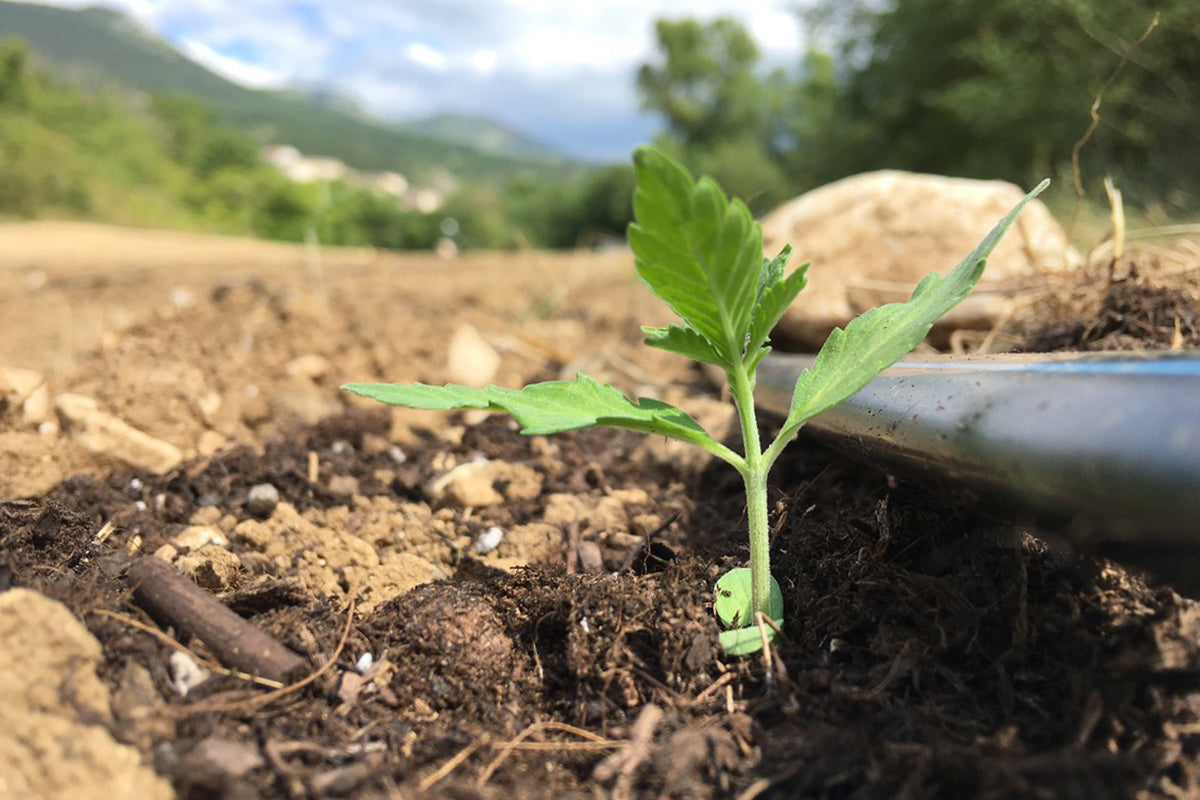How is cannabis grown? This question was taboo until recently. But in a historical moment, like the one we are experiencing, the Cannabis plant is returning to have a new splendor. This fact arises from the large-scale diffusion of light cannabis above all.
A new frontier of the world economy that has cleared various concepts and prejudices. And it opened a debate in civil society that is still ongoing. Especially in the therapeutic field.
When winter ends and spring arrives, the time for sowing approaches. Every grower, every farmer knows that this is a fundamental moment for having a good harvest. But let's start from the beginning, how do you prepare good soil for growing Cannabis?
Prepare the soil and the best conditions for cultivation
The conformation of the land for growing hemp is fundamental. Cannabis has a great ability to adapt and can be grown in different ways. To be put in the best conditions, the soil must be worked deeply and must have good drainage capacity. But not only that, the soil must have the right amount of nutrients and there must also be the best conditions from a humidity point of view .
The soil where we grow is important but the environmental temperature where the plant grows is also a constant to take into consideration. The ideal temperature for hemp cultivation is between 19 and 25 degrees centigrade , a mild but not too hot climate. Certain genetics are able to survive temperatures below zero, even reaching -5° , even if the growth process stops following excursions that are too low.
Water and light are two other fundamental factors. Water because it guarantees the vital supply for plants while light favors the development of the vegetative phase and flowering. Some studies state that at least 250-300 ml of rain are needed during the growing season. Or the same induced intake.
Light is necessary for the vegetative development of hemp, which has a strong need for light energy. Cannabis is sensitive to the hours of light of the day because it is a plant that tends to flower earlier , especially when the days get shorter. For this reason it is not recommended to sow too late .
Fertilization is another parameter to keep under control. A field planted with hemp produces large quantities of plant material, relatively to a short growing period. Nitrogen supply (especially in the first 5-7 weeks) is important, while potassium and phosphorus are important during the flowering period.
In the cultivation of Italian hemp, in the past manure was used as fertilizer, with 20-30 tons per hectare. Immediately after spreading, the first plowing was carried out. At a later time, through another deeper plowing and over time, other organic fertilizers derived from seeds (rapeseed, sunflower, flax etc...) but also animal waste were added.
How we fertilize
We have engraved in our DNA a strong bond with the territory that surrounds us. Our plantations are the emblem of this type of philosophy. Because we care about our territory, our lands.
At Terredicannabis we have a mission: to grow cannabis while respecting the environment. Nature returning to nature! We respect the soil in a simple and natural way.
We use earth to grow a plant. In an organic way, respecting the country and the people who live there. Without polluting , without defacing the animals' habitat but rather, working in synergy with it. And encouraging a continuous exchange of natural resources.
For this reason we practice winter green manure with the " favino " (broad bean plant). At the end of the harvest, the fields used for cultivation are sown with broad beans, a plant that grows quickly and requires no care. During the winter period, the various types of animals present in our area, such as fallow deer, deer, wild boars but also sheep, cows and crows come to the field to eat the beans.
Not only! After a feast of this delicious legume, the animals leave large quantities of excrement, which, when " chopped and kneaded " by plowing and milling, generates a good base of natural fertilizer.
Sowing Cannabis
The best time to sow cannabis depends on the weather conditions . The calendar could be a help but it is preferable to use the old peasant traditions: the weather conditions. Which remain the only tool capable of guaranteeing the best sowing, as well as the best cultivation techniques .
In theory, you should sow at the right temperature (at least 9-11°C ). From mid-February to early April is a fairly precise time range for sowing. Usually each seed needs a short time to germinate (24-48 hours).
If the soil is well hydrated and the climate is mild enough, the young plants will emerge after a few days ( 5-10 ). Clearly these rules apply depending on the type of cannabis we will have to plant, the climate, the soil and the external conditions. Industrial hemp for fiber is the one that should be planted as soon as possible, that for hemp seeds days later, around mid-March.
Planting density is also crucial. For biomass cultivation, furrows every 10-20 cm are sufficient, however for inflorescences, a distance of one to a half meters between each plant may be sufficient to have the right vegetative space.
Another precaution, if you are sowing to obtain inflorescences, is mulching . A sort of covering (with special sheets) of the soil which leaves a gap open only for the seed. This strategy is applied to defend the individual shoots and to guarantee the right supply of nutrients (it does not cause weeds to grow which would "steal" lifeblood from the hemp plants. Furthermore, this system is able to regulate the flow of rainwater, ensuring the right contribution.
Finally the sowing depth . The ideal one reaches 3-5 cm . Be careful not to "make deeper furrows": the shoots will have difficulty reaching the outside. But not too shallow either, planting hemp an inch deep could create a dry bed and uneven germination.
All this is valid for outdoor cultivation, then there are various rules for indoor cultivation too. But that's a whole other story.
Now, all you have to do is sow. And after sowing...





